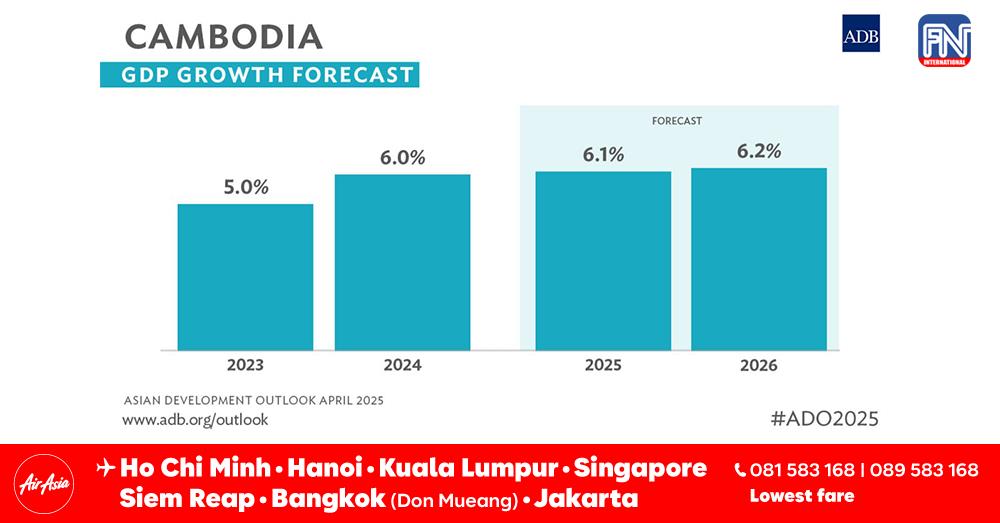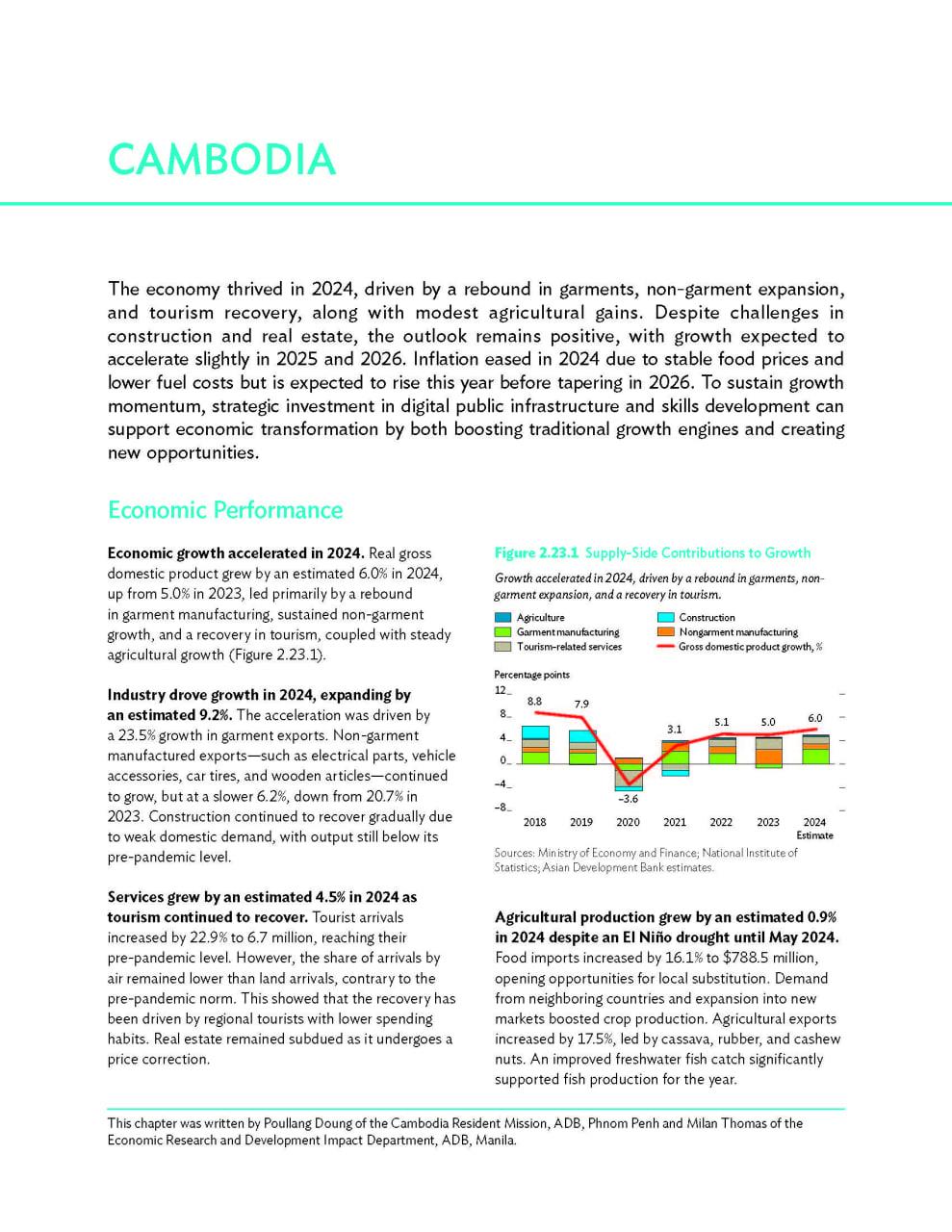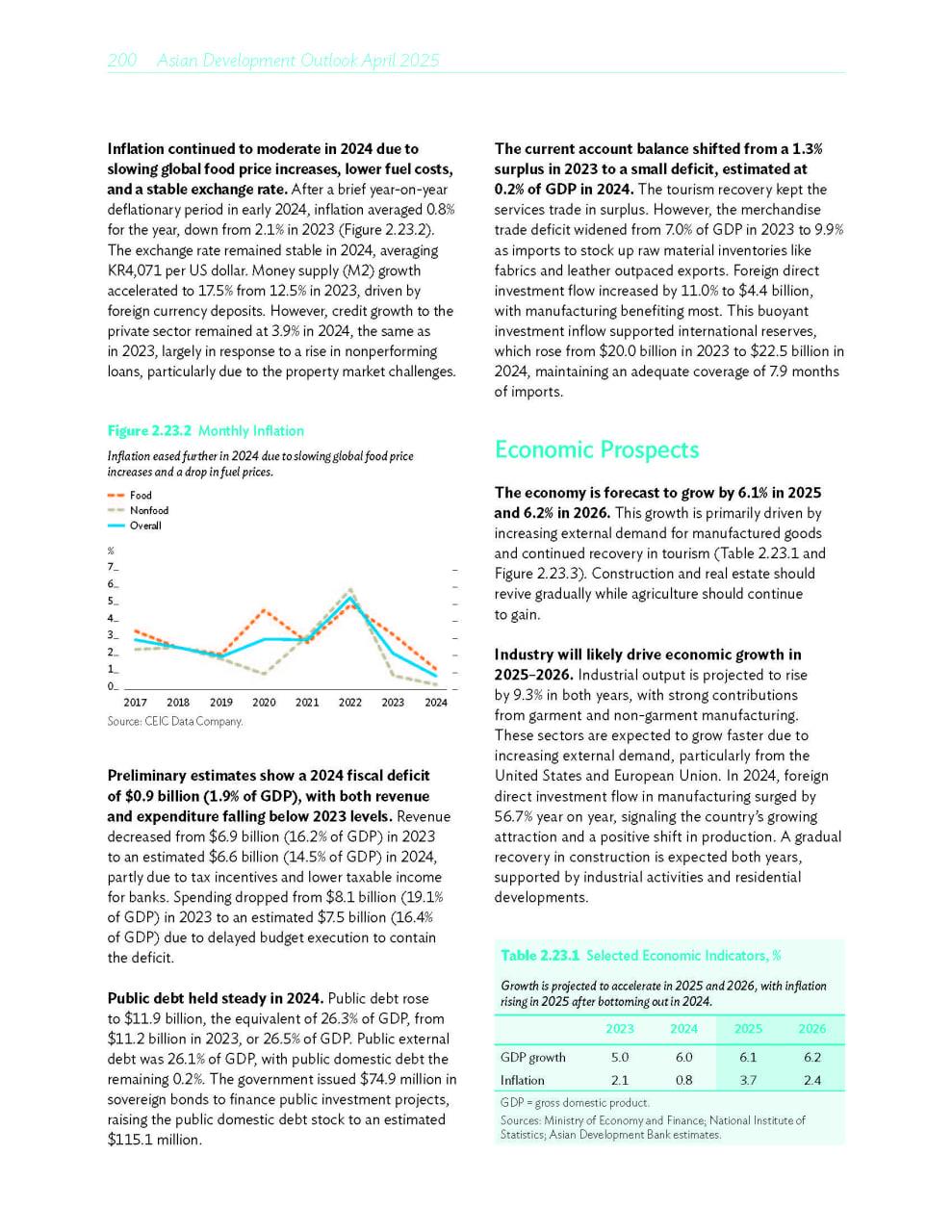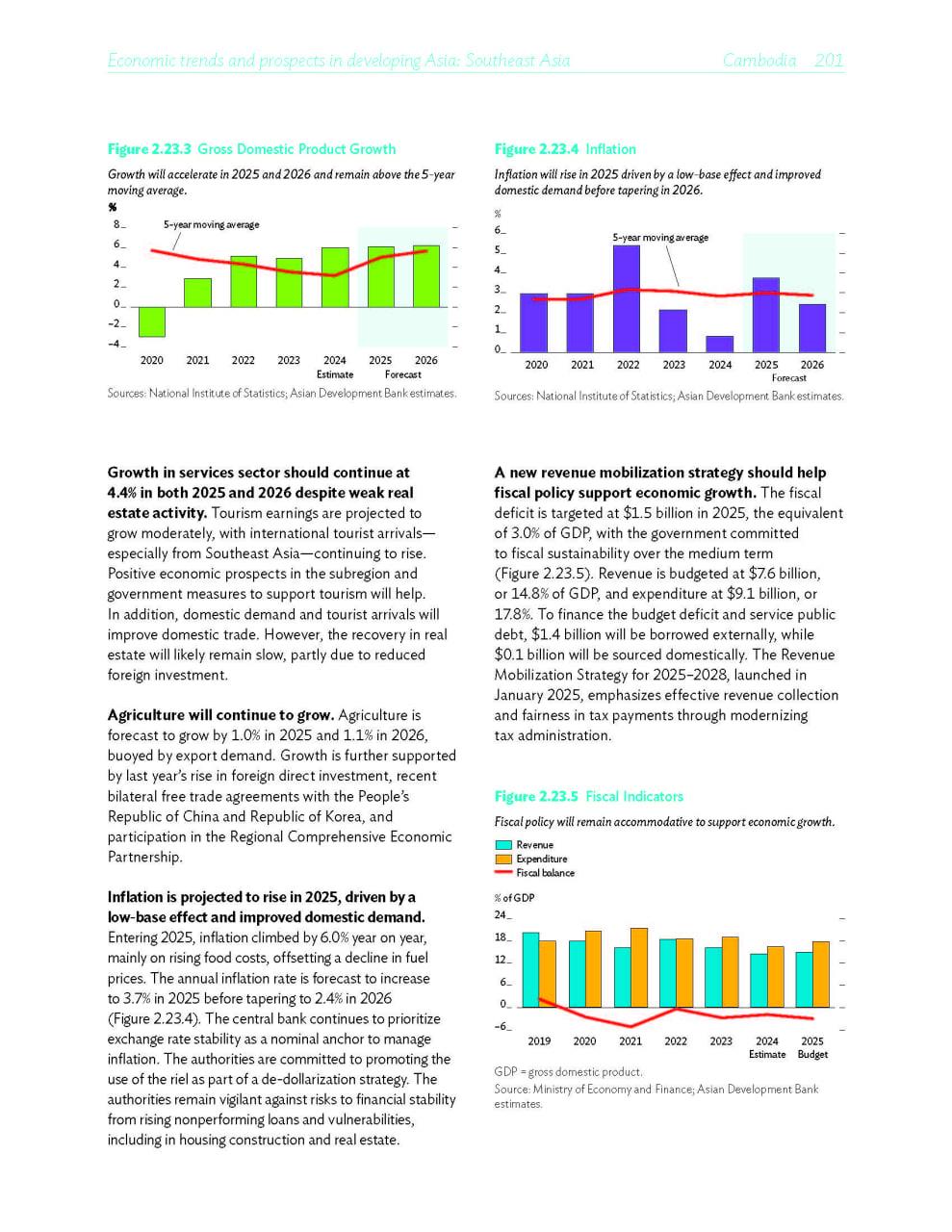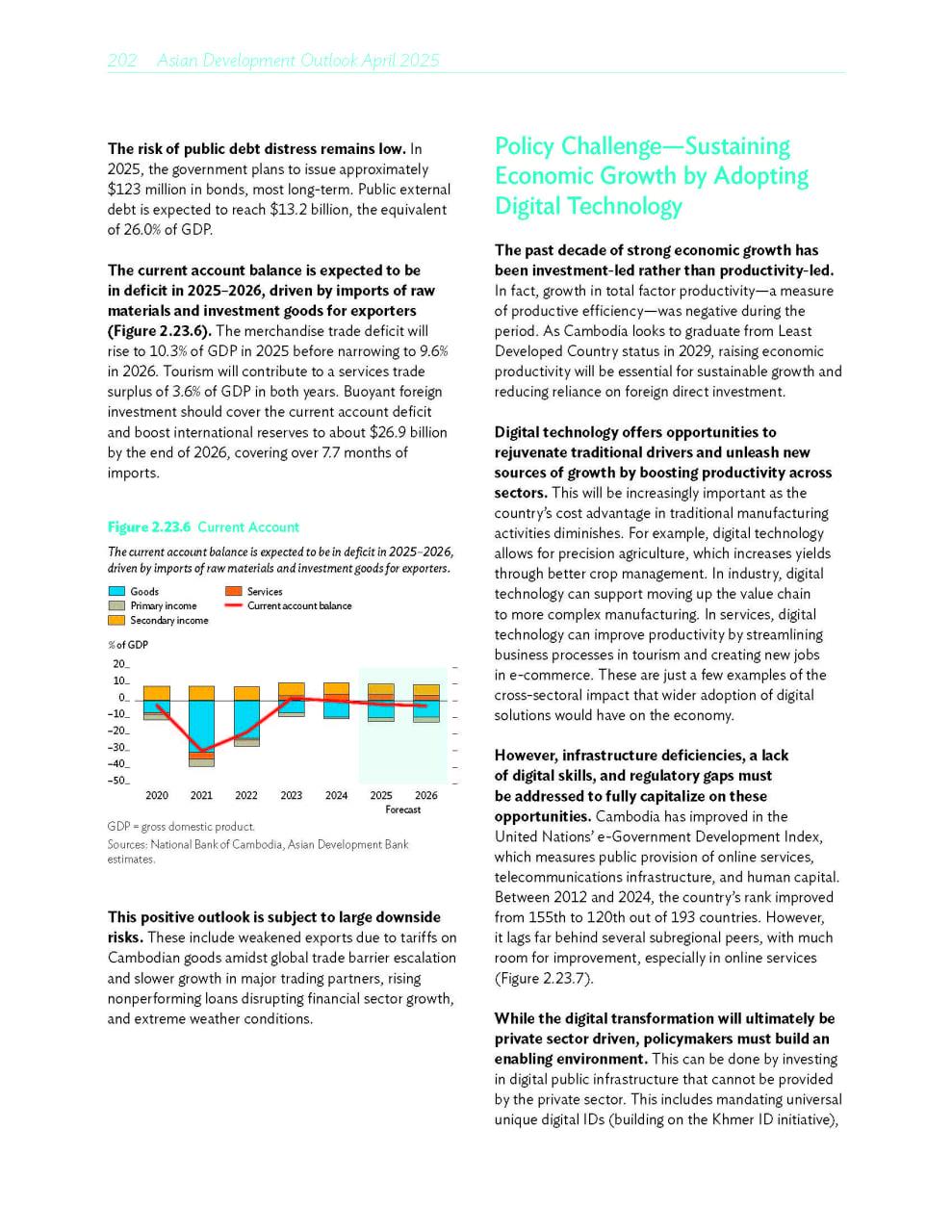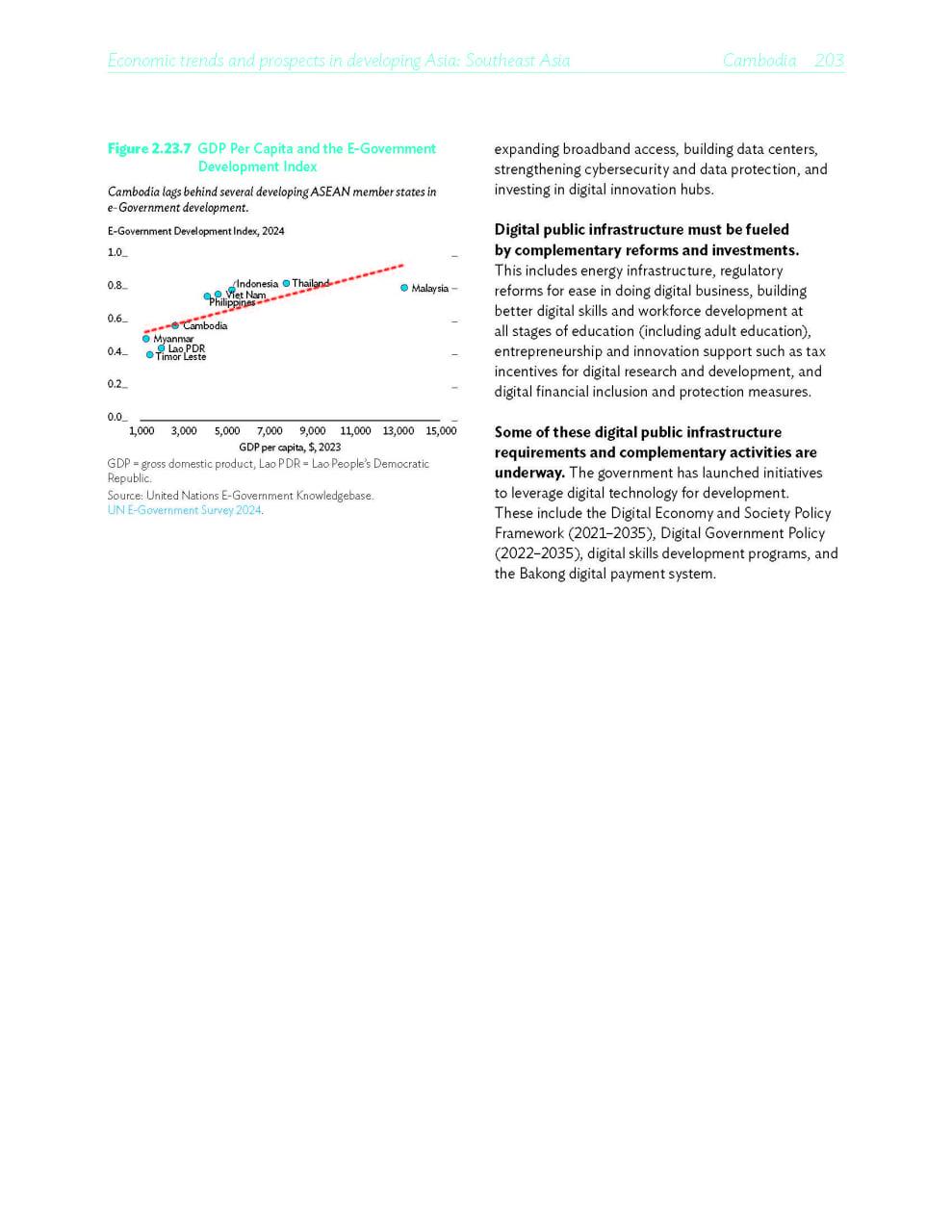Phnom Penh (FN), Apr. 9 – Cambodia is expected to maintain a steady economic growth trajectory in 2025 and 2026, driven by external demand for manufactured goods and the continued recovery in the tourism sector, according to the latest edition of the Asian Development Bank’s (ADB) flagship economic report.
The Asian Development Outlook (ADO) April 2025 estimates gross domestic product expanding by 6.1 per cent in 2025 and 6.2 per cent in 2026 after growing by 6.0 per cent in 2024. However, downside risks to the outlook have increased due to global uncertainties, including trade policy in the United States, instability in the People’s Republic of China’s property sector, and ongoing geopolitical tensions affecting supply chains.
The forecasts were finalised prior to the 2 April announcement of new tariffs by the U.S. administration, and the baseline projections only reflect tariffs that were in place as of March 2025. However, ADO April 2025 does feature an analysis on the potential impact of elevated tariffs on growth across Asia and the Pacific.
"The positive economic outlook for Cambodia in 2025 and 2026 reflects the country's potential for resilience and underlying strengths," said ADB Country Director for Cambodia Jyotsana Varma. "Even as global uncertainties persist, strategic investments in digital public infrastructure and human capital development will be crucial for economic diversification and unlocking new drivers for inclusive and sustainable growth."
Industrial output is projected to rise by 9.3 per cent in 2025 and 2026, led by robust performance in garment and non-garment manufacturing. Growth in the services sector is expected to continue at 4.4 per cent, despite weak real estate activity. Tourism earnings are projected to grow moderately, with international tourist arrivals—especially from Southeast Asia—continuing to rise.
The report also identifies digital transformation as a key policy priority to support long-term growth. While digital transformation will ultimately be driven by the private sector, policy makers must create an enabling environment. While Cambodia has improved its rank in the United Nations’ e-Government Development Index, moving from 155th in 2012 to 120th in 2024, gaps remain in online public service delivery and digital infrastructure. Cambodia must invest in digital public infrastructure, such as universal unique digital IDs, broadband access, data centers, cybersecurity, and digital innovation hubs. Complementary investments in human capital will sustain growth by raising economic productivity.
=FRESH NEWS
